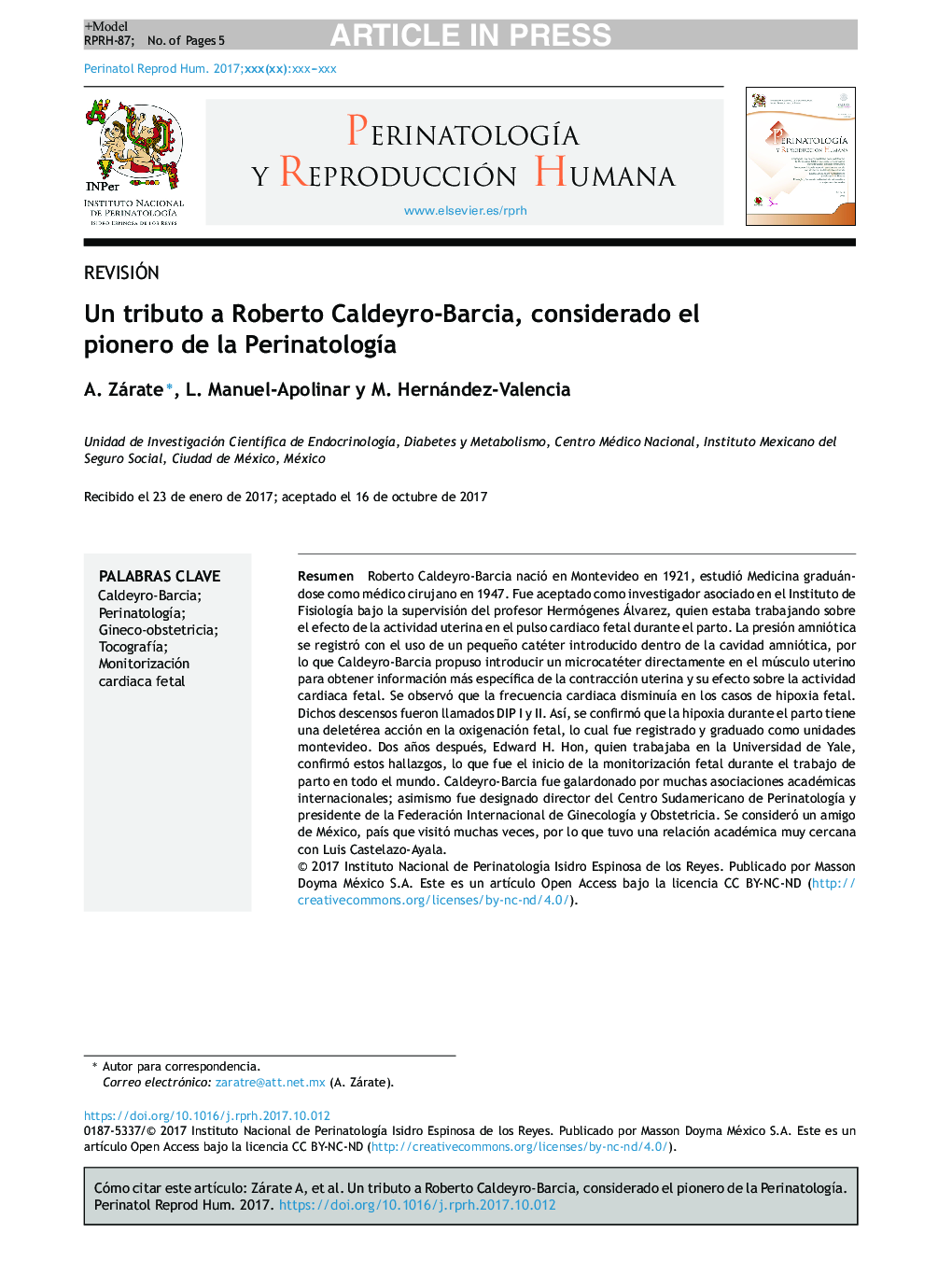| Article ID | Journal | Published Year | Pages | File Type |
|---|---|---|---|---|
| 8813643 | Perinatología y Reproducción Humana | 2017 | 5 Pages |
Abstract
Roberto Caldeyro-Barcia was born in Montevideo in 1921, and studied medicine graduating as medical physician in 1947. He was accepted as associate investigator at the Instituto de Fisiologia under Professor Hermogenes Alvarez, who was working on the effect of uterine activity on the foetal cardiac pulse during delivery. The amniotic pressure was registered by the use of a small catheter introduced inside the amniotic cavity. Thereby, Dr. Caldeyro-Barcia proposed to introduce a micro-catheter directly into the uterine muscle to obtain more specific information on the uterus contraction and its effect on foetal heart activity. It was observed that heart pulse was decreased in those cases of hypoxia. These decreases were called DIP I and II. Therefore, the theory was that during delivery hypoxia had a deleterious action on foetal oxygenation, which was registered and graduated as “Montevideo units”. Two years later Eduard H. Hon working in Yale University confirmed these findings, and it was the beginning of foetal heart beat monitoring during delivery in the whole world. Dr. Caldeyro-Barcia was presented worldwide with research awards. Moreover, he became the Director of the South-American Centre of Perinatology and President of the International Gynaeco-Obstetrics Federation. He was very fond of Mexico, a place that he visited several times, and had a close and warm relationship with Luis Castelazo-Ayala. Dr. Caldeyro-Barcia was considered an accomplished scientist, an exemplary mentor, and a leader in perinatology.
Keywords
Related Topics
Health Sciences
Medicine and Dentistry
Perinatology, Pediatrics and Child Health
Authors
A. Zárate, L. Manuel-Apolinar, M. Hernández-Valencia,
